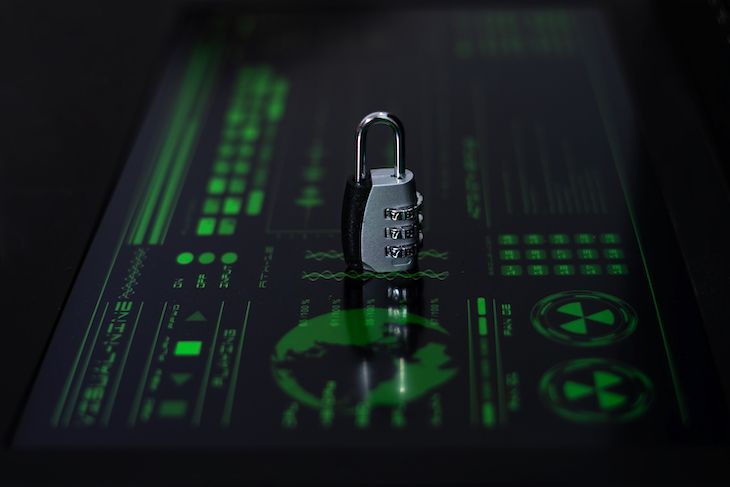The Role of UEBA in Zero Trust Security


As cyber threats have grown in sophistication and frequency, a paradigm shift in security strategy has become imperative. This shift has given rise to the Zero Trust Security Framework, an approach that challenges the very foundation of trust in network security.
User and Entity Behavior Analytics (UEBA) steps into the spotlight as a dynamic force that complements and enhances the Zero Trust Security framework.
Let’s discover how UEBA can help organizations achieve zero trust security!
Zero Trust Security is a holistic and proactive approach to cybersecurity that challenges the conventional notion of trust. It operates on the principle that trust should never be assumed and verification is a requirement, regardless of where a user or entity is located within the network.
In other words, the Zero Trust model assumes that threats may exist both outside and inside the network, and it treats all users, devices, and applications as potential security risks.

Zero Trust Security is founded upon a set of fundamental principles, each serving as a cornerstone for its robust framework:
Zero Trust advocates for the verification of every user, device, and application attempting to access network resources. This verification process includes rigorous authentication and authorization checks.
Users and entities are granted the minimum level of access necessary to perform their tasks. Excessive privileges are avoided to limit the attack surface.
Networks are divided into smaller, isolated segments to prevent lateral movement by attackers. Each segment is protected by strict access controls.
Continuous, real-time monitoring of user and entity behavior is a fundamental element of Zero Trust. Any deviations from normal behavior trigger alerts for further investigation.
Security policies are adaptive and dynamic, adjusting based on changing circumstances and risk factors. For example, access levels may change in response to detected anomalies.
Data is encrypted both in transit and at rest to ensure that even if an attacker gains access, they cannot easily access sensitive information.
Zero Trust Security matters in today's cybersecurity landscape because it aligns with the reality of persistent and evolving threats. Traditional security models, which rely on a network perimeter for protection, have proven insufficient in defending against modern cyberattacks.
Zero Trust acknowledges that threats can originate from anywhere and that an organization's own users and devices can be compromised.

User and Entity Behavior Analytics (UEBA) is an advanced security analytics tool that uses machine learning and statistical techniques to analyze user and entity behavior in an organization.
UEBA can detect anomalies, deviations, and patterns that indicate potential threats, such as insider attacks, compromised accounts, data exfiltration, and malware infection.
Implementing Zero Trust Security is not a one-size-fits-all approach; it requires a comprehensive strategy that encompasses various layers and technologies. Behavioral analytics is a crucial component of this strategy, contributing significantly to its strength and effectiveness.
Here's how UEBA’s user behavior analysis capabilities bolster the Zero Trust Security framework:
Continuous Monitoring: Zero Trust mandates continuous monitoring of all network activities, and UEBA is tailor-made for this task. It provides real-time insights into user and entity behavior, allowing organizations to track every action within their network. This constant vigilance ensures that any suspicious activity is promptly detected and addressed.
Behavioral Profiling: By analyzing historical data and establishing baseline behavior patterns for users and entities, it can quickly identify deviations from the norm. This proactive approach is essential in a Zero Trust environment, as it helps prevent potential threats from escalating.
Risk-Based Access Control: In a Zero Trust Security model, access control is granular and risk-based. UEBA assists in defining access policies by evaluating the risk associated with each user or entity based on their behavior. High-risk actions trigger access restrictions, reducing the attack surface and enhancing security.
Insider Threat Detection: Insider threats pose a significant risk to organizations. UEBA plays a pivotal role in identifying malicious or unintentional insider activities. By flagging unusual behavior patterns, it allows security teams to investigate and take corrective actions before damage occurs.
Threat Hunting: Zero Trust Security is not just about reacting to known threats; it's about proactively seeking out potential threats. UEBA empowers security professionals to conduct threat hunting by providing them with the necessary data and insights to uncover hidden threats within the network.
Adaptive Authentication: Adaptive authentication is a cornerstone of Zero Trust. UEBA enhances this by continuously assessing the authentication level required based on ongoing user and entity behavior. For instance, if a user's behavior deviates significantly from their usual patterns, UEBA may prompt additional authentication steps.
Anomaly Detection: UEBA's anomaly detection capabilities are invaluable in Zero Trust Security. It can identify even the subtlest deviations from established norms, helping security teams detect advanced threats that might evade traditional security measures.
Data Protection: Zero Trust Security extends its principles to data protection. UEBA aids in monitoring data access and usage, ensuring that sensitive information is only accessible to authorized users and entities.
Incident Response: In the event of a security incident, UEBA provides critical information to incident response teams. It offers insights into the context of the incident, the behaviors involved, and the potential impact, enabling faster and more effective incident resolution.

To implement UEBA in Zero Trust Security, organizations need to follow some best practices:
Define Scope and Objectives:
For a successful UEBA project, organizations should articulate clear objectives and scope. This entails determining which data sources to gather, specifying the use cases to tackle, identifying key performance indicators, and engaging relevant stakeholders.
Select the Appropriate Solution:
When choosing a UEBA solution, organizations must carefully evaluate options that align with their specific needs and requirements. Factors to consider encompass scalability, performance, accuracy, user-friendliness, integration capabilities, customization potential, and overall cost.
Deployment and Configuration:
The next step involves deploying and configuring the selected UEBA solution to suit the organization's unique environment and policy framework. Comprehensive testing and validation should precede the solution's full implementation.
Continuous Monitoring and Optimization:
To maintain effectiveness, organizations should perpetually monitor and fine-tune their UEBA solution. This entails regular review of results and reports, adjustments to settings and parameters when necessary, providing feedback to enhance algorithms, and keeping the solution up-to-date with fresh data and features.
By using a unified cybersecurity solution with UEBA capabilities, organizations can implement zero trust security more easily and effectively, as they can monitor and verify the behavior of every user and entity in real time and respond to any threats swiftly and accurately.
Logsign's USO Platform that integrates UEBA with other leading security technologies, such as security information and event management (SIEM), threat intelligence (TI), or threat detection, investigation, and response (TDIR), stands out from traditional UEBA security tools by offering superior benefits, such as:
Intuitive User Interface: Logsign simplifies security team operations through an intuitive and efficient interface. Easily access a wide array of visualization tools, report templates, and customization options via a user-friendly, drag-and-drop experience.
Effortless Deployment: Deployments often entail significant costs, time investment, and potential pitfalls. Logsign offers pre-built integration libraries, vendor-specific visualization, and reporting tools, minimizing deployment risks, chaos, and unexpected expenses.
Transparent Scalability: Logsign provides unlimited capacity subscription licensing without hidden fees or concerns about project sizing, data limits, or unforeseen costs. This empowers organizations to seamlessly scale their cybersecurity requirements.
If you're keen on harnessing the potential of UEBA within a Zero Trust Security framework, explore what the Logsign Unified Security Operations Platform can offer by requesting a demo today.